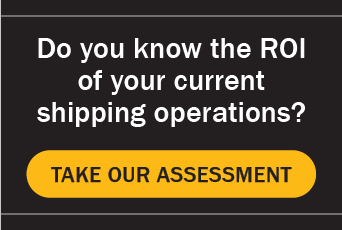Is a Recession Around the Corner? Shore Up Your Shipping Logistics Operations
Over the past few months, the constant sound of “the recession is coming” has echoed from every financial outlet and pundit. A recession may be inevitable, and having been through a few myself, I suggest several things to consider:
- You still have a business to run.
- Secure financing before you need it.
- Protect your cash flow.
- Reduce unnecessary expenses but continue money-saving projects.
- Make a detailed review of your staffing.
- Focus on the products/services that your customers are actually buying.
- Liquidate slow or unnecessary inventory to build your cash reserves.
It’s also important to keep in mind that the average recession lasts roughly 10 months, so you should plan accordingly.
With inflation at its highest rate in a generation, and the Federal Reserve trying to drive up unemployment by increasing rates, money becomes tighter, and companies work hard every day to do more with less. And regardless of a down economy, or one that is flat or up, as stated in #4 above, it is vital that money-saving programs, with good to exceptional ROI, do not stop. You will get through this, and saving money through and after a recession, will always help your bottom line.
Focus on profitability
When I took my first management job, I was told I had two revenue responsibilities as a manager:
- To help the company make money.
- To help the company save money.
Both actions were working to make our business more profitable, and during a recession, profitability determines whether you win or lose. If a project will make you more profitable, it would be irresponsible not to implement it.
Unfortunately in this challenging time, one additional concern continues to stay at the top of managers’ minds, and that’s labor supply and qualifications, the biggest challenges in the industry today. Labor requirements and logistical costs have skyrocketed in recent years, adding to the list of current challenges.
Historically, most small to midsize companies have simply thrown more people at any and all logistics problems, and this practice is starting to show its flaws. As a result, many companies have seen their costs increase, while their “unlimited” pool of potential employees to fill these positions has come to an end. And that makes it difficult to maintain profitability.
Adapt to keep up with technology
After many years in this industry and weekly discussions with leaders at all levels, my overall sense is that fewer than 30% of midsize companies have made any significant improvements in their logistics and warehouse processes or automation in the last ten years.
The six most dangerous words in business are, “We’ve always done it that way.”
The problem comes when you follow that up with a simple “Why?” And very few people ever seem to know. Not questioning old, engrained or ineffective policies from time to time can prove expensive.
While major logistics companies and their services have grown and improved exponentially, (UPS, FedEx, Manhattan, Koerber, Amazon, and others) the logistics departments/groups within most companies haven’t kept pace. Several potential solutions (TMSs, WMSs, process automation, Warehouse Controls Systems, etc.) are far better than what exists in the typical warehouse environment, and virtually every good one of these projects, if selected and managed properly, pays for itself in six to twenty-four months. Obviously, the more it costs, the more likely the ROI will be on the longer side.
Selecting and managing a WMS or TMS project takes your best and brightest and often takes a good consultant with significant past experience. During this recession/pause could be the right time to implement those long-delayed projects that will establish your warehouse and logistics baseline for the next 10+ years before your company falls even further behind. This is the time to take a hard look at how your systems and processes stack up against those that are now viewed as necessary in your ever-changing industry.
Improve your shipping logistics operations now
With companies being squeezed from all sides, you’re probably wondering how you will handle your current warehouse and shipping logistics operations with fewer people. The only answer is improved efficiency.
As my company, Creative Logistics Solutions (CLS), develops and installs small parcel and LTL shipping software, I can speak most effectively about how our software and process differ from most of our competitors and is just one example of software that produces the less-than-one-year ROI I’ve been talking about.
This is the time to take a hard look at how your systems and processes stack up against those that are now viewed as necessary in your ever-changing industry.
Look around during this time for your areas of quick ROI. In most cases a great area of low-hanging fruit is shipping and warehouse software for the following reasons:
- Short implementation times, generally.
- Low cost of acquisition.
- High return on investment.
- High labor savings.
- High process improvement.
- Low risk IF managed properly.
- Reduced staffing labor requirements.
If you think all shipping software is the same, ask yourself a few questions about your current shipping solution:
- Does your shipping software work every day with no interruptions or slowness?
- If you need support, can you get it from the person who installed your system in less than 15 minutes (24 x 7 x 365)?
- Is one shipping station or process affected if you activate or use another shipping station or process?
- Can you feed shipping data/information to your website or customer service in real time for quoting shipment costs?
- From the time you initiate a shipment, does the label print in less than 4 seconds?
- Can your current shipping software easily handle all of your shipping volumes, regardless of the time of year?
Before beginning any project, always get a clear understanding of the ROI before you commit to spending a dime. I will leave you with a couple of figures to keep in mind:
- To pay for a $100,000 project you must save at least $385/day in the first year to get the necessary ROI for a one-year payback (assuming 260 shipping days/year).
- After year one, ~75% of the first-year savings is money in your pocket, which includes the cost of ongoing license fees.
Regardless of what comes to the economy over the next few months, make the necessary improvements to your shipping logistics operations that will help you make money where possible and, just as importantly, save you money where possible.
Learn more about CLS and InfoShip/Vx.
Learn more
Reduce Your Shipping Costs by Optimizing Your Standard Packaging Sizes
How Much Is Your Slow Shipping System Costing You?
###
 Rick Williams, former President and CEO of Creative Logistics Solutions (CLS), is a shipping systems technology expert with advanced experience in e-commerce business fulfillment, B2B and B2C order fulfillment, parcel transportation management, and shipping logistics operations. CLS helps companies automate shipment processing for domestic and international commerce, increase warehouse productivity, and reduce labor costs by eliminating manual tasks, improving processes, and reduce shipping costs with InfoShip™/Vx, its multi-carrier shipping software platform.
Rick Williams, former President and CEO of Creative Logistics Solutions (CLS), is a shipping systems technology expert with advanced experience in e-commerce business fulfillment, B2B and B2C order fulfillment, parcel transportation management, and shipping logistics operations. CLS helps companies automate shipment processing for domestic and international commerce, increase warehouse productivity, and reduce labor costs by eliminating manual tasks, improving processes, and reduce shipping costs with InfoShip™/Vx, its multi-carrier shipping software platform.
Copyright ® Creative Logistics Solutions. All rights reserved.





